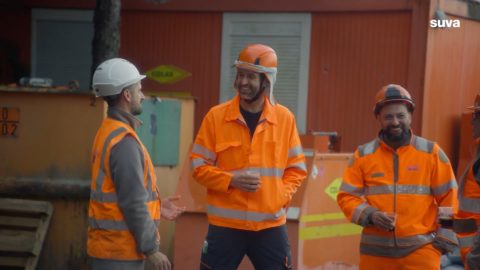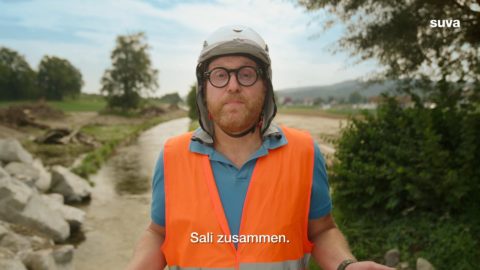Video Localization: How to Deliver the Message?
Introduction
In Switzerland, shooting a video is often the easy part. The real challenge is making it understood. And not just by translating.
Because although our country is officially multilingual, it is above all profoundly multicultural. Between German-speaking Switzerland, Romandy, and Ticino, sensibilities, references, and communication styles vary as much as languages. Poorly dubbed ads from German — which all residents of Romandy have already endured — are a striking proof of this.
At Imaginastudio, we approach each project with a simple question: how can we ensure that the audience truly feels involved, regardless of their language or culture? Here’s an overview of the possible solutions — and their limits.
1. Video localization of on-screen text
The limited option
When the video has no voice (animation films, gesture recordings, visual data), sometimes all that’s needed is localization of on-screen text. We have a dedicated department for this — animated text, typography, titles, embedded subtitles — with translations validated by native speakers. Video localization can be a major task, especially with many languages. That’s why we’ve set up a localization workflow and efficient video tools that allow us to serve many markets quickly. For an international brand, we localize multi-asset international campaigns into over 50 different languages. Beyond text, this process considers each country’s legal specifics: mandatory mentions or censorship of certain shots in certain regions.
In this case, we work closely with the headquarters’ marketing department, which provides us with campaign masters. We localize the video content and deliver the localized videos to markets around the world in record time.
To apply this method, it’s important to combine technology and human oversight. Thanks to technological tools and new AI possibilities, part of the process can be automated, but the human eye is still essential to adjust the graphics and place text so it doesn’t overlap important video elements or get truncated.
Localization is an elegant approach depending on needs, but limited to certain formats.

2. Subtitling
The fast track
Subtitling is often the simplest and least costly solution for companies. Keep the original video, add subtitles in the target language. Quick, efficient, and avoids the cost of dubbing.
But… not ideal. A Swiss German video, even perfectly subtitled, will struggle to resonate in French-speaking Switzerland. And vice versa. The spoken language remains a strong cultural marker that can create distance.
3. Dubbing
An imperfect solution
Dubbing removes the language barrier: you hear the right language, with a fitting voice. With precise work, actors or voice‑over artists can credibly reinterpret the audio. For certain videos—tutorials, explainer videos, educational formats—dubbing using synthetic voices or voice‑AI can even offer a fast and economical approach.
But for advertising, professionals are still essential. Despite tempting cost savings, poor-quality dubbing—often due to tight budgets—can ruin the emotional impact of the message.
And even with good dubbing, the film often betrays its cultural origin. The concept, humor, tone, facial expressions or pace… all remain deeply rooted in a specific linguistic region. The language changes, but the perception still feels foreign.
4. Double casting
Two languages, one shoot
For some projects, we choose a hybrid solution: shoot two versions of the same spot, with two casts—for German and for French. That’s what we did for Visilab.
Same script, same lighting, same edit. But in one version, actors speak German; in the other, French. Bernhard Russi, an iconic bilingual figure, appears in both versions as a cameo.
A small extra production cost, but a huge gain in authenticity. And a spot that never feels “adapted.” It simply feels at home in every region.


5. Different content
Linguistic… and cultural adaptation
To go further, some Swiss brands choose to completely rethink their content based on linguistic regions. SUVA does this, commissioning Imaginastudio to evaluate each concept: can it cross the Röstigraben?
Example: a campaign raising awareness among hairdressers to wear gloves. Result: two videos. Two different hairdressers, each known in their region. Two types of humor, two approaches. Same message, two stories tailored to each culture.


Conclusion
Other example: the “Ribi / Juan” series. In German-speaking Switzerland, the construction worker Ribi. For Romandy, Juan—a more relaxed, friendly style that resonates with French speakers. The core message is the same—but the form is designed to speak to each audience in their culture.


Conclusion
Think local to speak nationally
Switzerland isn’t just a multilingual country. It’s a land of nuances, cross‑references and intertwined cultures. Adapting a video is not just changing the language — it’s translating the intention and adapting the tone.
At Imaginastudio, we believe that smart localization is a creative lever, not a constraint. And that a good message is one that was designed for each audience from the start.


